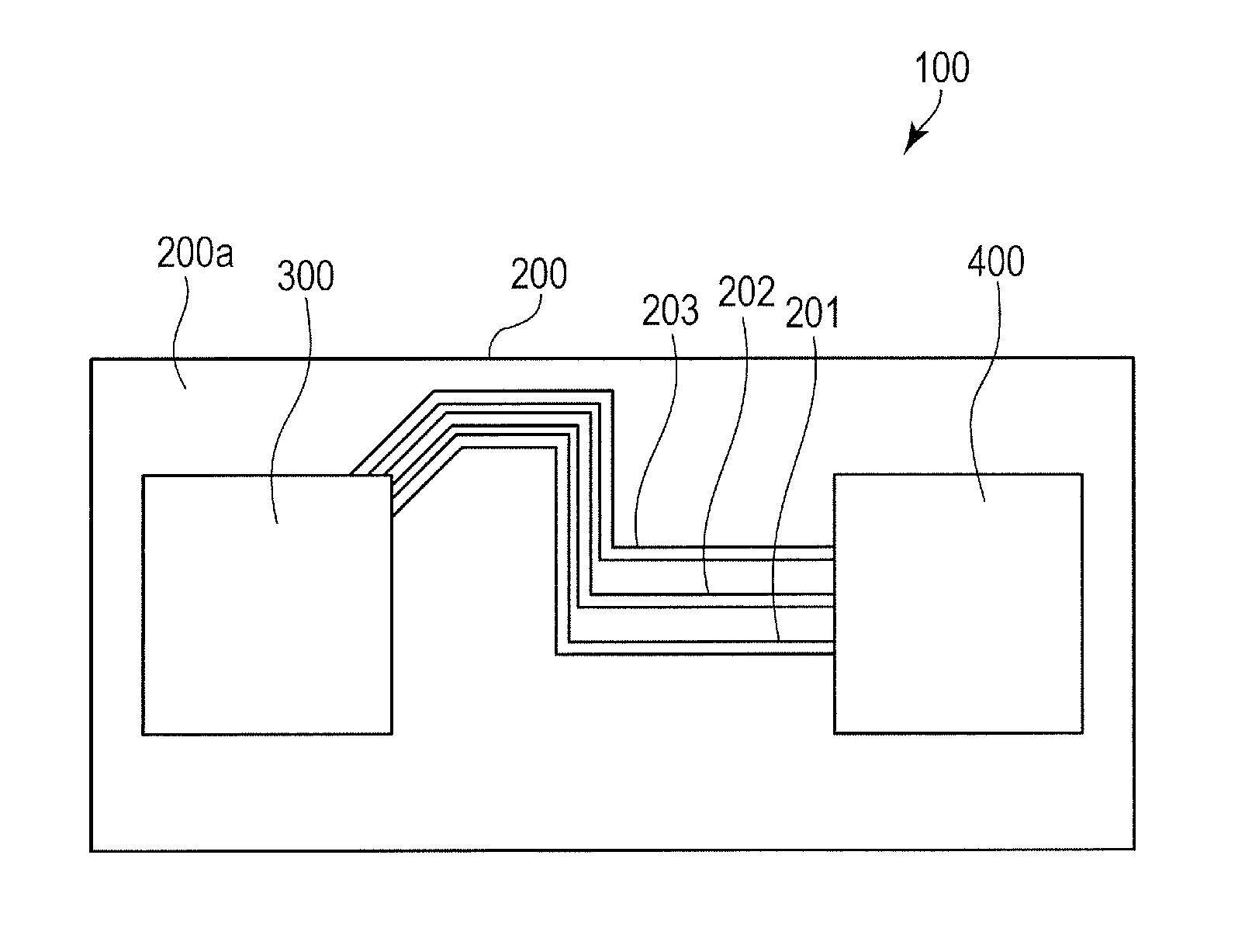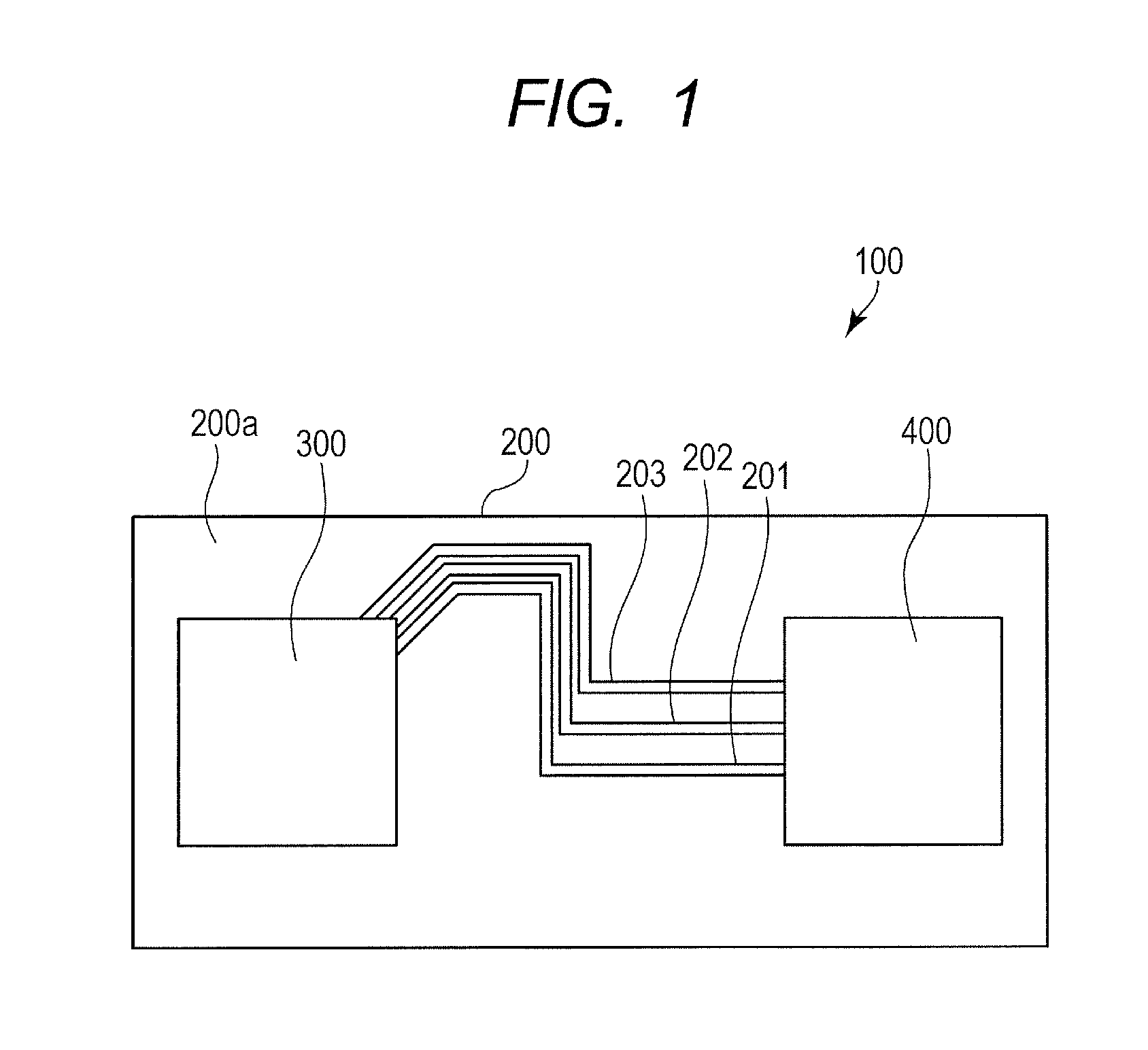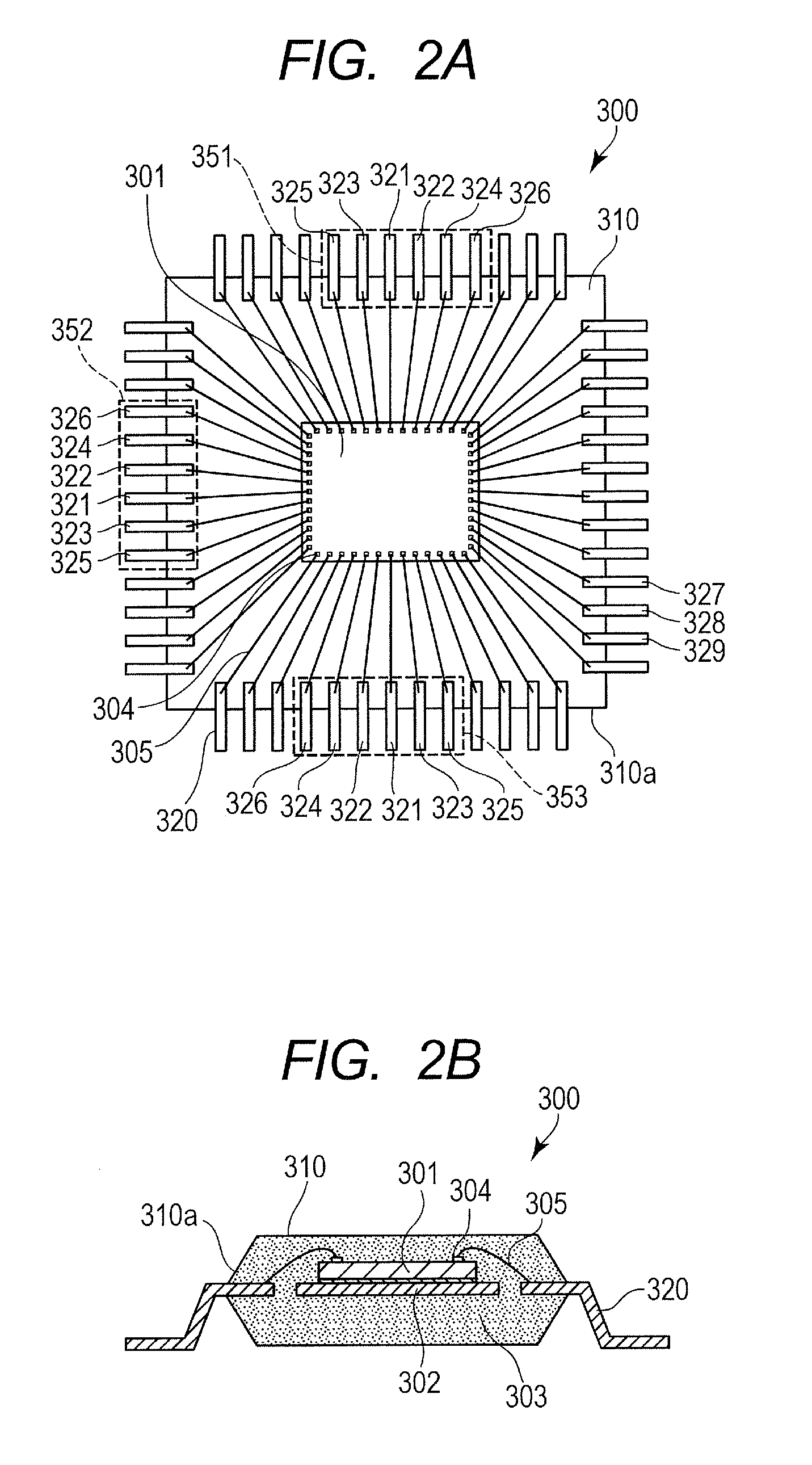Printed circuit board and printed wiring board
a printed circuit board and wiring board technology, applied in the direction of printed circuit non-printed electric components association, sustainable manufacturing/processing, final product manufacturing, etc., can solve the problems of malfunction, power supply terminals not being connected with different dc, and power supply potential fluctuation caused by malfunction, etc., to reduce the number of layers of printed wiring boards, suppress radiation noise, and reduce power supply potential fluctuation
- Summary
- Abstract
- Description
- Claims
- Application Information
AI Technical Summary
Benefits of technology
Problems solved by technology
Method used
Image
Examples
first embodiment
[0030]FIG. 1 is a plan view illustrating a schematic structure of a printed circuit board according to a first embodiment of the present invention. A printed circuit board 100 illustrated in FIG. 1 includes a printed wiring board 200, an LSI 300 as a semiconductor package that is mounted on another layer 200a of the printed wiring board 200, and a power supply circuit 400 that is mounted on the surface layer 200a and supplies power to the LSI 300.
[0031]The LSI 300 is an LSI that requires multiple power supplies, namely an LSI that operates when multiple different DC voltages are applied. The power supply circuit 400 supplies the multiple different DC voltages.
[0032]The LSI 300 and the power supply circuit 400 are electrically connected by first to third main power supply patterns 201 to 203 as conductor patterns disposed on the surface layer 200a of the printed wiring board 200. The power supply circuit 400 applies the multiple different DC voltages to the LSI 300 via the main power...
second embodiment
[0062]Next, a printed circuit board according to a second embodiment of the present invention is described. FIG. 5 is a plan view of the printed wiring board in a vicinity of the LSI according to the second embodiment of the present invention. In the second embodiment, the same structure as that of the first embodiment is denoted by the same numeral or symbol so that overlapping description is omitted.
[0063]In the first embodiment, there is described the case where the first power supply pattern 211 is formed in a single stroke manner as illustrated in FIG. 3. However, the present invention is not limited thereto, and as illustrated in FIG. 5, a power supply pattern 211A may not be formed in a single stroke manner.
[0064]In the second embodiment, an LSI 300A includes two terminal groups 351A and 352A as the multiple terminal groups. The terminal group 351A includes one power supply terminal 321A applied with a DC voltage different from those applied to the other power supply terminal...
third embodiment
[0067]Next, a printed circuit board according to a third embodiment of the present invention is described. FIG. 6 is a plan view of the printed wiring board in a vicinity of the LSI according to the third embodiment of the present invention. In the third embodiment, the same structure as that of the first and second embodiments is denoted by the same numeral or symbol so that overlapping description is omitted.
[0068]In the first embodiment, there is described the case where the power supply patterns 211 to 213 are wired via one corner part C1 of the first region R1 as illustrated in FIG. 3. However, the power supply patterns 211 to 213 may be wired via any one of the multiple corner parts.
[0069]In the third embodiment, as illustrated in FIG. 6, the printed wiring board includes first to third main power supply patterns 201B, 202, and 203 which are arranged in the second region R2 on the surface layer 200a and are applied with different DC voltages from the power supply circuit. The ...
PUM
 Login to View More
Login to View More Abstract
Description
Claims
Application Information
 Login to View More
Login to View More - R&D
- Intellectual Property
- Life Sciences
- Materials
- Tech Scout
- Unparalleled Data Quality
- Higher Quality Content
- 60% Fewer Hallucinations
Browse by: Latest US Patents, China's latest patents, Technical Efficacy Thesaurus, Application Domain, Technology Topic, Popular Technical Reports.
© 2025 PatSnap. All rights reserved.Legal|Privacy policy|Modern Slavery Act Transparency Statement|Sitemap|About US| Contact US: help@patsnap.com



